Einleitung
Du hast viele Vorteile davon, wenn du ein zweites Laufwerk in deinen iMac einbaust, z.B. höhere Geschwindigkeit, mehr Speicherplatz und weniger Aufregung bei der Installation neuer Software. Hier wird gezeigt, wie du anstelle des optischen Laufwerks ein zweites Laufwerk einbauen kannst.
Werkzeuge
Ersatzteile
-
-
Befestige einen Saugnapf in jeder der oberen Ecken der Scheibe.
-
Wenn der Saugnapf sich nicht festsaugt, dann versuche die Scheibe und den Saugnapf mit einem milden Reinigungsmittel zu säubern.
-
-
-
Hebe die Scheibe vorsichtig senkrecht zum LCD an, gerade soweit um die Metallstifte, die oben an der Unterseite der Scheibe angebracht sind zu befreien.
-
Ziehe die Scheibe von der Unterkante des iMac weg und lege sie sorgfältig zur Seite.
-
-
-
Ziehe das Flachbandkabel für die Vertikalsynchronisierung aus seinem Sockel auf der LED Treiberplatine nahe der oberen linken Ecke des iMac.
-
-
-
Kippe das Display weit genug aus aus dem äußeren Gehäuse, um das Kabel für die LED-Rückbeleuchtung von der LED-Treiberplatine zu trennen.
-
-
-
Drücke die beiden Hebel am Verbinder des Display-Datenkabels zusammen, um sie vom Sockel auf dem Logic Board auszurasten.
-
Ziehe das Display-Datenkabel aus seinem Sockel auf dem Logic Board heraus.
-
-
-
Ziehe sorgfältig das Display zum oberen Rand des iMac und hebe es aus dem Gehäuse. Achte darauf, dass sich dabei keine Kabel verfangen.
-
-
-
Entferne die vier 9 mm T10 Torx Schrauben, die das optische Laufwerk am äußeren Gehäuse befestigen.
-
-
-
Hebe die innere Kante des Laufwerks hoch und bewege seinen Verbinder aus dem Rahmen am Logic Board.
-
Ziehe das Laufwerk vorsichtig aus den Haltestiften am Rand des äußeren Gehäuses und schaffe so Platz, um das Kabel am optischen Laufwerk lösen zu können.
-
-
-
Löse den rot markierten Teil des Aluminiumbands ab, der am Laufwerk klebt. Der Rest an der schwarzen Plastikhalterung kann bleiben.
-
-
-
Entferne die beiden T10 Torx Schrauben auf jeder Seite des optischen Laufwerks, also insgesamt vier.
-
-
-
Drehe die Halterung leicht weg vom Laufwerk.
-
Ziehe die Halterung weg vom offenen Ende des optischen Laufwerks, achte dabei darauf, dass sich keine Kabel verfangen.
-
-
-
Löse das Stück verklebten Schaumstoff mit der Spudgerspitze vom Thermosensor des optischen Laufwerks ab.
-
Heble vorsichtig mit dem flachen Ende des Spudgers den Thermosensor aus der Verklebung mit dem optischen Laufwerk.
-
-
-
Entferne die drei 3,0 mm Kreuzschlitz #0 Schrauben aus dem Gehäuse des optischen Laufwerks.
-
-
-
Öffne das Gehäuse, indem du von der linken Kante ausgehend vorsichtig ziehst.
-
Ziehe weiter an den beiden Gehäusehälften, bis sie sich trennen.
-
-
-
Entferne die beiden 3,0 mm Kreuzschlitz #0 Schrauben, mit welchen die Frontblende am Gehäuse des optischen Laufwerks befestigt ist.
-
-
-
Hebe die schwarze Kunststoff-Frontplatte aus dem Gehäuse der Optical Bay.
-
Baue das Gehäuse des optischen Laufwerks ohne die Frontplatte unter Verwendung der drei originalen 3,0 mm Kreuzschlitz Schrauben wieder zusammen.
-
-
-
Entferne den Abstandshalter aus Kunststoff vom Gehäuse des optischen Laufwerks, indem du einen der Clips auf beiden Seiten eindrückst und ihn dann nach oben aus dem Gehäuse heraushebst.
-
-
-
Stelle sicher, dass die Anschlüsse nach unten zeigen, bevor die Festplatte in das Gehäuse eingesetzt wird.
-
Lege die Festplatte vorsichtig in das Gehäuse.
-
Während eine Hand das Gehäuse an Ort und Stelle hält, drücke mit der anderen Hand die Festplatte an die Anschlüsse im Gehäuse.
-
-
-
Sobald die Festplatte fest sitzt. kannst du den Abstandshalter aus Kunststoff wieder einsetzen. Drücke dabei die Festplatte gegen die Unterseite des Gehäuses.
-
Schließe alle Kabel, die du vom ursprünglichen Laufwerk entfernt hattest, am optischen Laufwerk an.
-
Um dein Gerät wieder zusammenzusetzen, folge den Schritten in umgekehrter Reihenfolge.
9 Kommentare
I followed this guide to place a samsung 840 EVO 750 GB ssd in the optical drive bay. The instructions worked near perfectly. However, I got many SATA CRC errrors. Not a connector seating problem. After placing the SSD in the hard drive bay (following the hard drive replacement guide) no more CRC errors.
I tested with an older laptop hdd: This works fine in the optical bay.
Apparently either the optical drive bay does not work well with the samsung 840 EVO or my optical drive cable is no good.
I reassembled my superdrive and placed the SSD in place of my built-in HDD for a nice speed increase.
Is there any listing of ssds that work well in the OD bay?
I recently replaced my HD with an SSD drive. Watching this guide actually helped too!
I would also like to replace the optical drive with a Hard Drive. Would it make much of a difference wether I use a SSD or a 7200rpm HD? I would be using it for video and audio files for Protools and Final Cut Pro that are running on the SSD..
It seems like the negotiated speed on the optical SATA is only 1.5 Gigabit..
Do you attach the thermal sensor to the equivalent place on drive enclosure as it was on the optical drive?
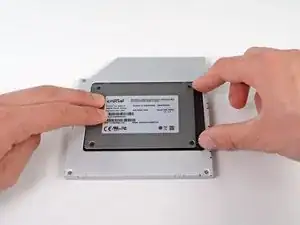
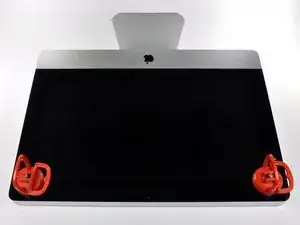
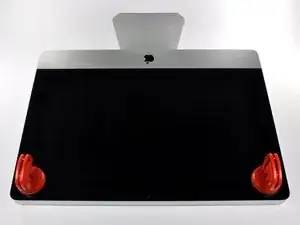
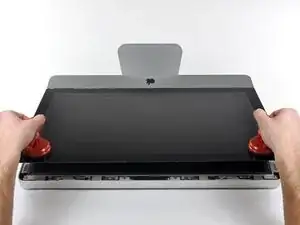
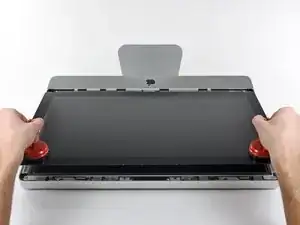
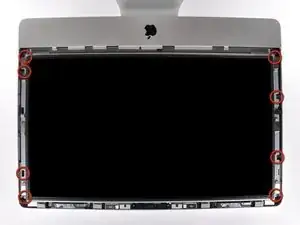
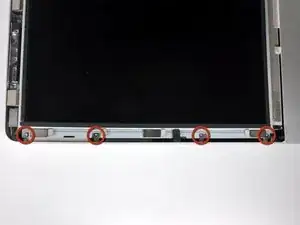
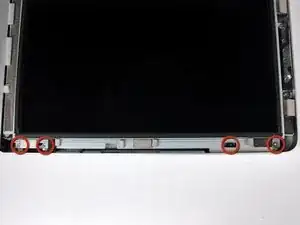
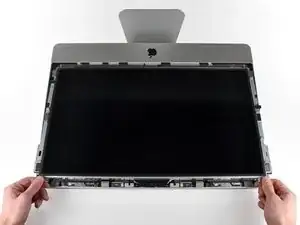
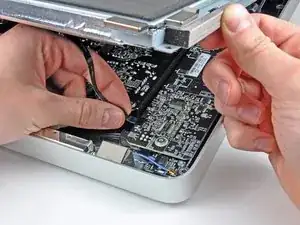
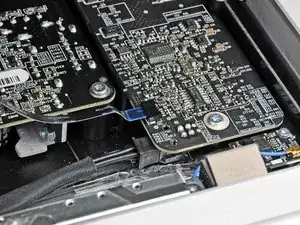
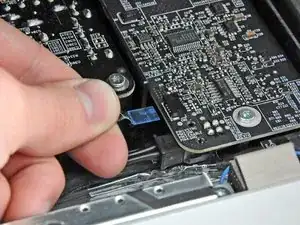
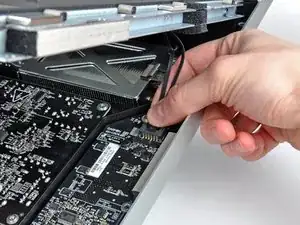
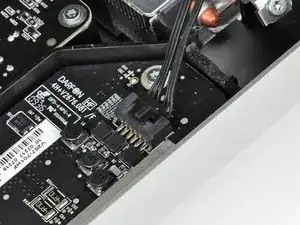
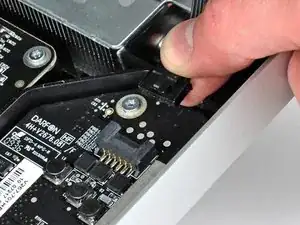
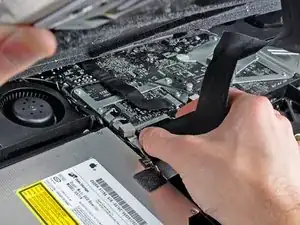
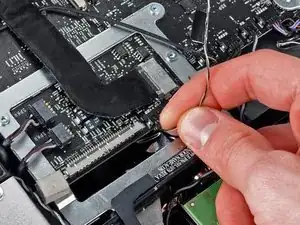
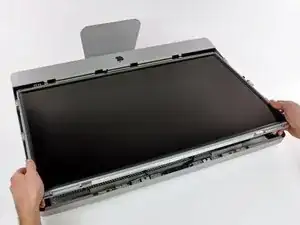
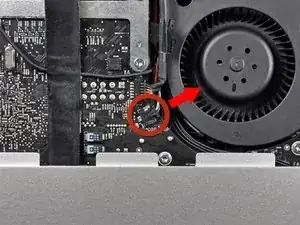
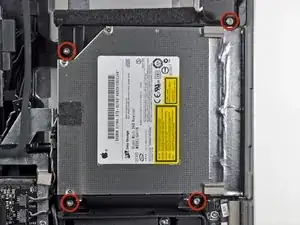
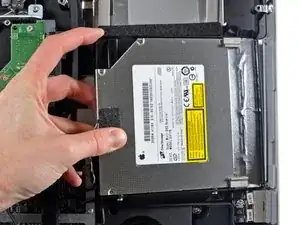
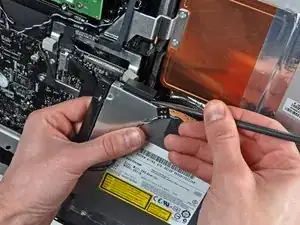
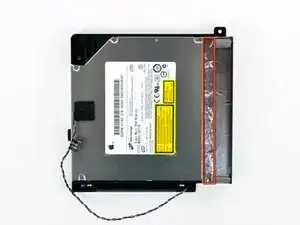
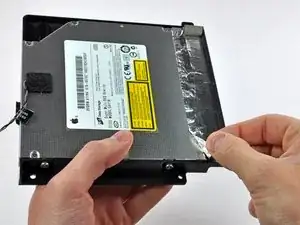
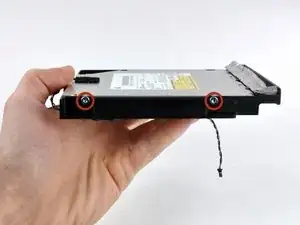
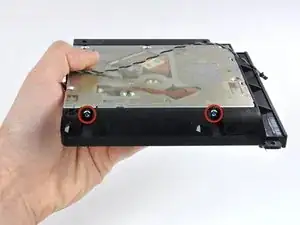
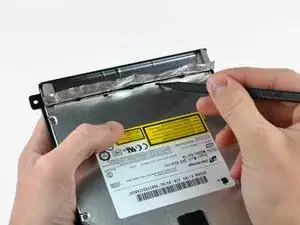
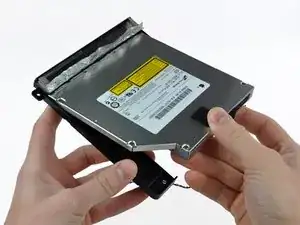
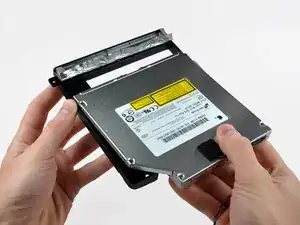
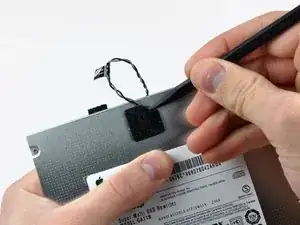
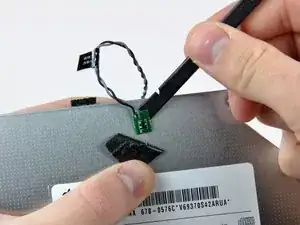
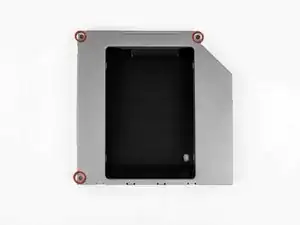
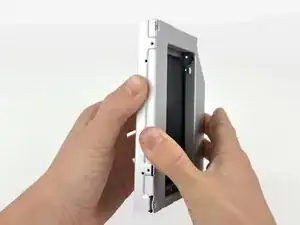
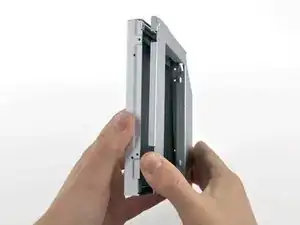
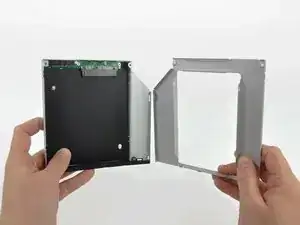
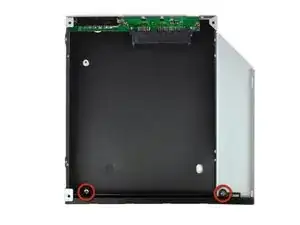
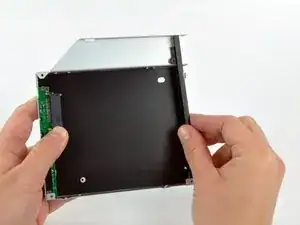
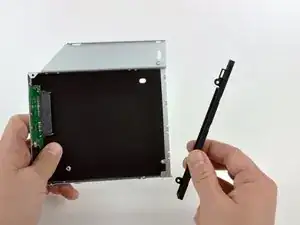
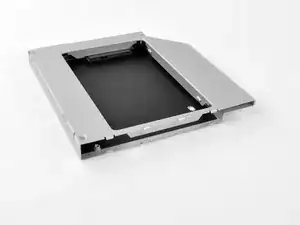
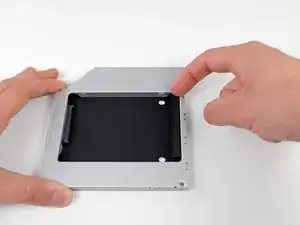
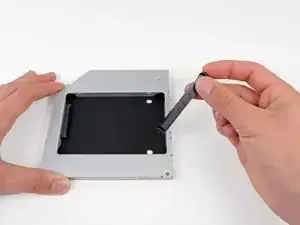
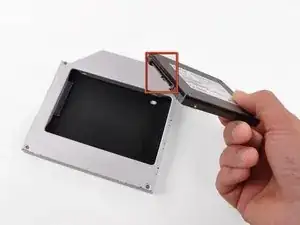
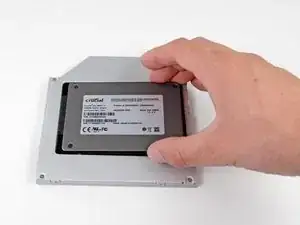
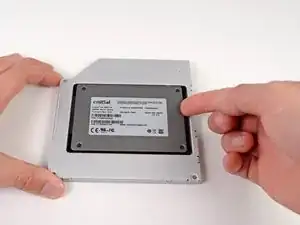
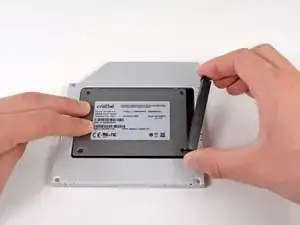
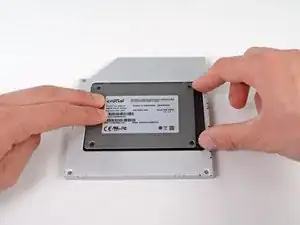

Very easy to lift the glass out. Don't jerk too hard.
kctipton -
Another comment on DATA & LCD Temp. Sensor cables: I had to remove the vertical sync, and the backlight cable, however, if you have an assistant or/can carefully rotate the screen clockwise/and then have it held up about 5" to 6" at a slight angle, you do not need to remove LCD data cable or LCD thermal cable, however - IMPORTANT: you must have a second pair of hands/or way to securely prop up the LCD. Also, don't rotate too much, since then you will pull out LCD data cable, and it renders the whole exercise moot, or can damage the cable or connector.
MaximBorzov -
You don't need suction cups. The screen, held by magnets, can simply be pried off using a very thin blade such as a screw driver and fingers.
Deepsurvival -
That's a bad idea. using a metal tool to pry off glass is likely to end with an expensive broken front glass.
Suction cups are common. Find a couple and do it the safe way. I use some cheap ones that came with iPhone repair kit.
max damage -
No need for suction cups, I just stuck my nails (short like guys usually have) between the top part of the screen and body, and it came off easily. I've never done it before, so it seems to be very easy.
Nikolas Lintulaakso -
Nails worked for me too
Rob Dale -
Just completed the replacement of the optical drive with an SSD using an OWC Data Doubler kit. Attempted to remove the optical drive without disconnecting any cables but found it a bit fiddly to orient the screen for good access. I bit the bullet and disconnected them and found the process less daunting than I imagined. Reconnecting them was similarly straightforward if you're careful.
Tip: you can skip the step for removing the optical drive thermal sensor connector from the motherboard. Still need to remove the sensor from the optical drive but you can leave that hanging and reattach it to the SSD later.
osienna -
I use Garmin GPS suction cup. Work very well
jc3Dcx -
I’ve just successfully installed a 1TB SSD in place of my optical drive thanks to the information here- thank you to everyone who has contributed!
3 comments- the procedure described here seems to vary between HD replacement and dual HD/optical drive replacement. This can be confusing at times.
Expect there to be minor differences between the layout described and what you find when you open up your iMac. There are also, surprisingly, differences between the HD enclosure description, and the article provided by ifixit.
I was able to replace the DVD/HD enclosure single-handedly without fully removing the LCD, or deconnecting any of the cables (steps 5-11). It’s a bit cramped, and fiddly, but I was not happy removing any of the cables despite watching videos, etc., since they all seemed to involve applying more force than I was comfortable with. A more detailed description of how to release them might have helped, but even here, there may be minor variations even within the 2389 model.
Good luck!
ivan birks -
I did it several times with one suction cup at the end of a kitchen brush. Once with the blade of a swiss army knive, also ok. And i’m pretty sure it works with fingernails too
Tai -
Fingernails are all you need to free the glass from its magnetic hold. If you don’t have them, slip something thin and plastic, like a spudger, at a top corner.
Max Powers -
Minha dúvida é a seguinte: após o técnico trocar o HD do meu iMac de 21,5 polegadas, a câmera parou de funcionar. Seria por causa da troca do HD? Tem solução?
Claudio -
Creio que o cabo da camera não foi plugado ou deu mau contato… ou até danificado.
glecyo@gmail.com
glecyo medeiros -
I can’t get my glass to budge. I’m replacing a cracked one and now it’s about to shatter.
jamboxmitchell -
I know that I'm replying really late but I advise to use clear tape over any cracks so the cracks don't get bigger
Jace Holmes -
Check for chips in the glass BEFORE you do this step. If there is a chip when you pull up with the suction cups you will wind up with a jagged mess. If you do have a chip I would advise covering the screen near the chip with clear tape of some kind before lifting out. Mine shattered right at the chip and the resulting glass dust cloud got all over. My solution was buying a new glass screen.
BCam -